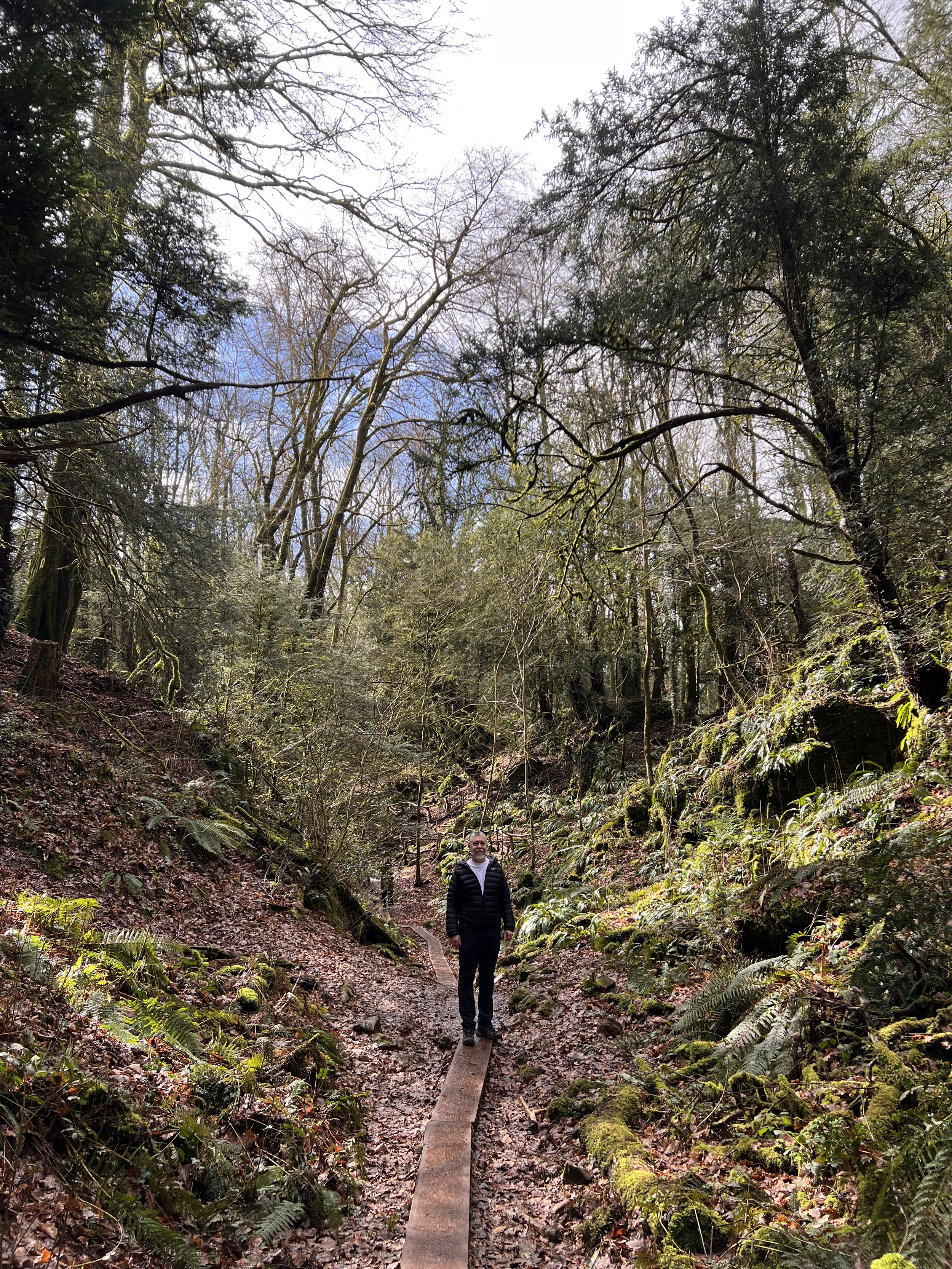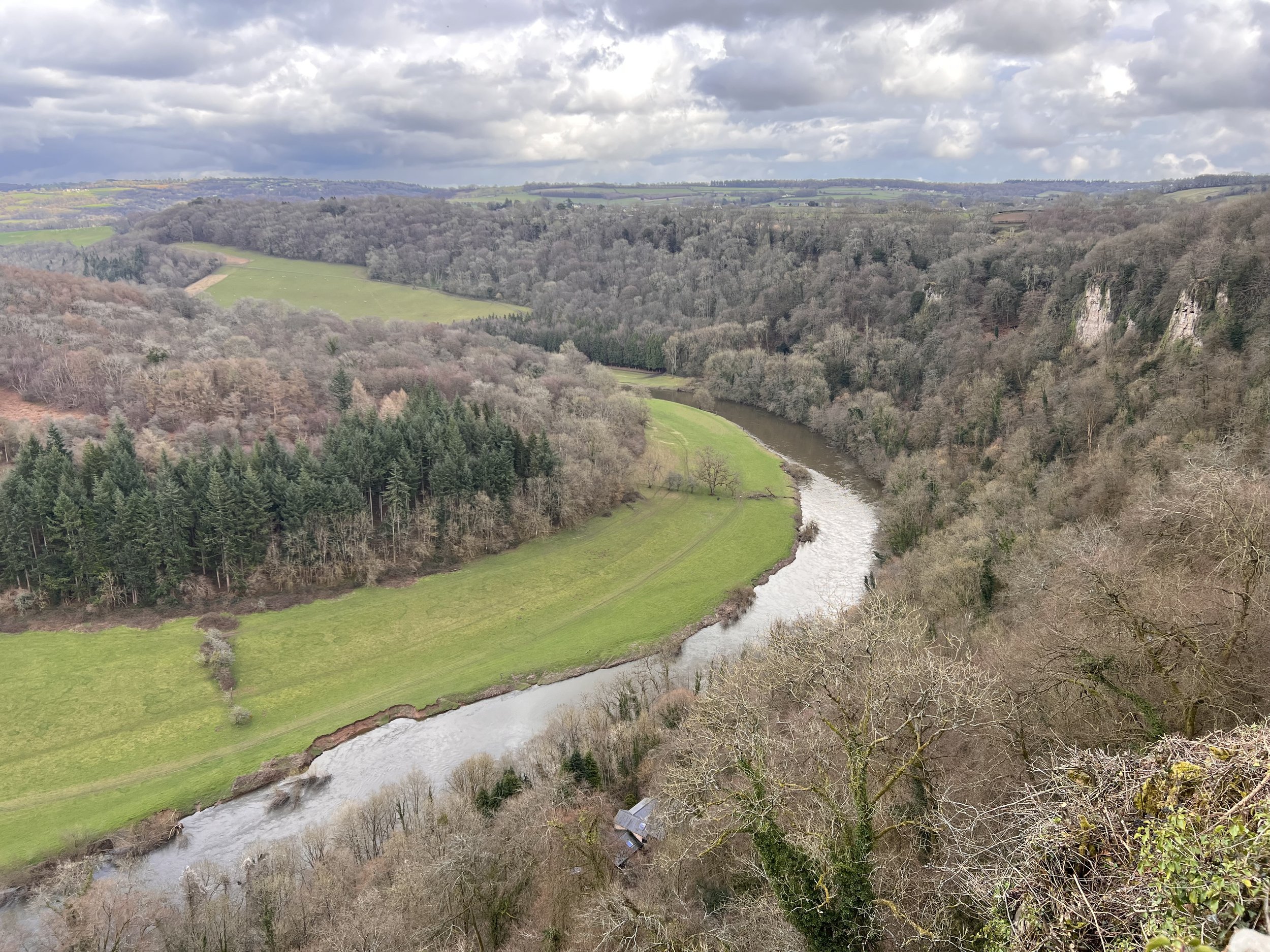Happy UK Mother’s Day
Welcome to Our 75th Blog Post!
“Mystery has energy. It pours energy into whoever seeks an answer to it. If you disclose the solution to the mystery you are simply depriving the other seekers. Man needs the existence of mysteries. Not their solutions.”
March 19 is Mother's Day in the UK. Here Mother’s Day always falls on the fourth Sunday of Lent, which takes place just after Pancake Day. Pancake Day, or Shrove Tuesday, is the day before Ash Wednesday. The term Shrove is rooted in the word “to absolve” and UK Christians often eat pancakes and other sweets to mark the end of Lenten sacrifice. It may be 8 weeks ahead of schedule by USA custom, but we still take this moment to celebrate both our mothers today—we love you Ruth and Pam!
Wiltshire’s White Horses
Over the years around thirteen white horses have been carved out of the chalk into hillsides across Wiltshire. Out of that thirteen, only eight white chalk horses are still visible today, five having been washed away by the rain due to lack of maintenance. Of the eight massive white horses, the oldest, the Westbury White Horse, was created in 1778.
Back in early February, when we visited Avebury with Will, we saw the Cherhill White Horse (1780) as we drove past it on the A4.
In stark contrast to my birthday on Tuesday, Wednesday found us donning rain coats and waterproof boots before heading up the hillside in search of the not-so-elusive Alton Barnes White Horse.
On our way to the horse, we diverted to see Adam’s Grave. The grave is almost certainly not the final resting place of anyone who went by the name Adam. Instead, it was aptly named after the first person believed to have walked the earth.
A tumulus is a mound of earth and stones raised over a grave or graves. Tumuli are also known as barrows, burial mounds, or kurgans, and may be found throughout much of the world. A cairn, which is a mound of stones built for various purposes, may also originally have been a tumulus.
The Adam’s Grave chambered long barrow is from the Early Neolithic period, which began in the UK some time around 4,000 BC. Adam’s Grave was created perhaps around 3,600 BC. I find it difficult to wrap my mind around the fact that we were standing on a grave estimated to be roughly 5,623 years old!
The material required to build the mound (in the background), including the chalk to finally cover it, was quarried from two massive ditches running on either side of it.
Looking back on Adam’s Grave. As with so many of the other chalkland monuments of this time, the long barrow was capped in chalk and would have gleamed white much as the local carved white horses do today. As Martin Green says in his book A Landscape Revealed,
“Their original appearance must have been exceptionally striking. Cresting the hill their gleaming white form would have provided a clear statement to those who viewed them of the resident community’s rights to the land.”
Not quite on the scale of the Great Pyramid of Giza, but, then again, quite impressive considering they pre-date Giza by a millennium.
At long last, we spot the Alton Barnes White Horse. This horse was cut into Milk Hill, about a mile north of the village of Alton Barnes. It stands 180 feet high and 160 feet long and was commissioned in 1812 by local farmer Robert Pile.
Other horses can be found in Marlborough (1804), Hackpen (1838), Broad Town (1864), and Pewsey (1937). The Devizes White Horse was carved in 1999 in celebration of the Millennium. It is unique in that it is the only horse in Wiltshire to be facing to the right.
From directly above, the horse doesn’t look like much more than a pile of rocks; however, the view over the Vale of Pewsey is simply beautiful.
The view of the horse from its namesake village of Alton Barnes.
West Wood - Marlborough Downs
West Wood is a beautiful former ancient woodland site that becomes very popular in late spring when a fantastic display of bluebells will carpet the forest floor. The bluebells are already blanketing the floor, but sadly only their green shoots were showing. 😔
My lovely Rain Princess
Soon this forest will look like this!
West Kennet Chambered Long Barrow
Sorry, I misspelled Kennet on the title screen of the following video: https://www.youtube.com/watch?v=vS-Ih0v5Qj8
The long barrow was built in about 3,650 BC by an early farming community, people who had arrived from Continental Europe only a few generations before.
In the early Bronze Age (3,300 BC to 1,200 BC), three large stones were placed to block the entrance and finally seal off the chambers.
Today the opening is accessible and West Kennet is one of only a few long barrows you can enter. It boggles the mind to consider that you are entering a structure build approximately 5,673 years ago!
For about 50 years, ancient peoples placed their dead into the different chambers, grouping them according to age, sex, and perhaps social or family group. As new people were placed in the chambers, older burials were disturbed and the bones re-arranged.
Over the next 1,000 years people regularly returned to the long barrow, filling the chambers with earth, ash, chalk rubble, and sarsen stones.
Mixed with this material were pottery sherds, flint tools, and the bones of both humans and animals. Perhaps the barrow became a shrine to the ancestors or to the land itself. Much still remains a mystery.
The back of the chamber has been blocked off due to damage to the remaining segments of the long barrow.
As we leave the barrow and walk back to our car, one final selfie with Silbury Hill in the background. The showers may have been “scattered,” but they managed to find us all day. And now we’ve had just about enough wind, rain, and cold for one day—haven’t we? It’s time for a nice cuppa, a chocolate biscuit, and a toasty house! Ta ta for now!
St Patrick’s Day
Sláinte from our Guinness chairs at The Salutation Inn in The Gibb, Chippenham.
We had a lovely 1.8 mile walk along pastoral lanes from our house to the pub. It’s always ideal to have a proper pint of Guinness on St Paddy’s Day!
Church Cottage
Saturday was our final day touring the area around Bath before Debbie and Nathan arrive in London on Monday morning. We decided to spend the day exploring the amazing Wye Valley Area of Outstanding Natural Beauty (AONB). The Wye Valley resides in two countries, broken neatly in two by the peacefully meandering River Wye—the boundary between Wales to the west and England to the east.
Church Cottage is in the village of Tutshill, Gloucestershire, England, at the southern edge of the Wye Valley.
Joanne Rowling, together with her parents and sister, moved to the house in 1974 when she was aged nine. The family lived here until in 1995 (when Joanne was 18). Rowling indirectly owns the home now with the intent of controlling its future.
Features inside the house include an under-stairs cupboard, reportedly similar to the one in which Harry Potter was forced to live, and there is a trapdoor to a cellar, similar to the entrance to the Chamber of Secrets.
Rowling’s family often visited the Forest of Dean (inside the Wye Valley AONB), so it is no surprise that, in her book, Hermione thought to disapparate to the Forest of Dean, a secluded place where Hermione went camping once with her family. Hagrid was also born in or near the Forest of Dean. This home is an often overlooked source of inspiration for her writing.
It really is a lovely home!
Puzzlewood
Inside the Forest of Dean is Puzzlewood, a wild landscape of unusual rock formations, caves, and ancient trees—all blanketed in moss. The name may have made more sense as “Puzzling Wood,” because it took people so long to figure out how it formed.
Geologists now know the landscape was formed when underground limestone caves were uplifted and exposed to erosion. The surface of Puzzlewood is covered with scowles—the remaining deep hollows and exposed rock of eroded caves.
Given the unique setting, it is no wonder Puzzlewood was used to film The Secret Garden (2020), Star Wars: Episode VII - The Force Awakens (2015), Dr Who, and many others.
I think I just saw an Ewok!
You may recall our visit to Wistman’s Wood in Dartmoor National Park and how they do not want you walking inside the forest because so many visitors will surely damage the fragile ecosystem within. We certainly recommend visiting Wistman’s, but a visit to Puzzlewood is very much like walking inside Wistman’s Wood…probably better!
Can you spot the elephant?
The fabled forests of Middle-earth that feature in JRR Tolkien's books The Hobbit and The Lord of the Rings are said to be inspired by Puzzlewood. Tolkien was a frequent visitor to the Forest of Dean and worked here during the late 1920s. It’s not in the least bit difficult to imagine Gandalf the Grey, Saruman the White, elves, orcs, or dragons inhabiting this forest!
Yat Rock Viewpoint
We finished our tour of the Wye Valley with a stop at the Yat Rock Viewpoint.
From here we watched lightning bolts streak out of the sky and listened as thunder rumbled from the storm cell visible in the distance, all while watching peregrine falcons gliding through the sky below us.
The bend in the River Wye below required no visual effects to give it a striking appeal when Harry walks to the river’s edge on a frosty morning in the Deathly Hallows Part 1. It’s amazing that they were able to film such scenes in the actual location described in the book.


































